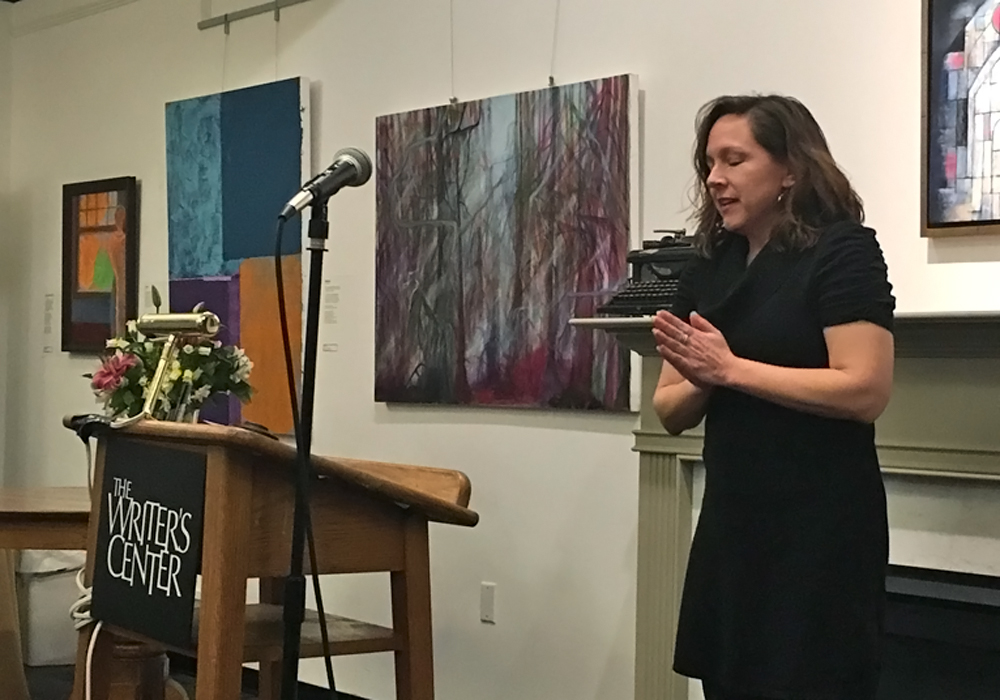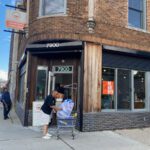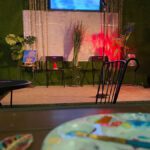It’s not often—okay, really quite rare…like never-happened-to-me-before rare—that a poet gets to read her work in front of the very people she most wants to hear it. The ones whom she wrote for it in the first place or the ones most likely to get it. People who care about the topic and understand the hook, and whose chins are angled just right for the punch line.
On February 19 at The Writer’s Center in Bethesda, I had the great fortune to read three poems in a room full of people who didn’t need me to explain or introduce or define anything beforehand. This was a gathering of authors whose work appeared in the February issue of O-Dark-Thirty, a lit journal published by the Veterans Writing Project.
That issue was devoted to the writing of women veterans. I was pleased and proud to have three poems in the collection and to have the chance to perform them alongside other writers who bring to their work a shared experience, a slew of uniformed metaphors, and stories I can /so/ relate to.
What a veteran looks like
It’s fair to say, I think, that men who’ve been in the service are usually easy to spot. There’s the upright, rod-spined kind who still sports a high-and-tight, and there’s the kind who flaunts his freedom from grooming standards by going crazy-hippy with the hair. But even the latter often wears an old boonie hat, a DAV or VFW ball cap, or some other accessory from his uniformed days.
Female vets? We’re a little harder to pick out in a crowd.
That night, the readers ran the spectrum of femininity and swagger—high-maintenance hairdos to one-minute ponytails, glamor make-up to none, fashion jewelry to spartan accessories. I’d like to say there was some ineffable quality to us. I’d like to believe that, if I’d run into any of these women on the street, I’d have known them on sight as fellow vets. But I’d be kidding myself.
If we hadn’t been asked to dress for the event, I’d have been tempted to wear my favorite sweatshirt—a soft gray hoodie, made by a veteran-owned company called Lady Brigade, with the legend “This is what a veteran looks like.” If only for the photo op.
What a lady veteran writes like
All in all, the readings were a nice mix of exactly what you’d expect veterans to write about, plus a few things that might surprise.
Some of us covered old territory, things that have been or and still are often written by male veterans. Other pieces were imbued with the unique perspective a woman brings—because we are far fewer (~15%, according to a semi-recent CNN report) than our male comrades, and/or because we bring a different perspective to our service and so leave with a different set of takeaways.
We read about fear, courage, sex, insult, missing, and caring—about people we served with and family, yes, but also about goats (yes, goats). And we said it in images of sand, gas masks, and lace—using military nomenclature like a kind of handle to carry our stories, and maybe to keep from losing our grip.
For me, while I only sometimes write about things I did in the Army, that body of experience often shows up in poems that are ostensibly about other things—whether it’s walking down a sidewalk at night or enjoying the sight of a man in a towel.
The uniform. The jargon. The jokes. The oath and everything I meant by it. The training. The military stays with me, as it surely does for the women I heard in Bethesda. I hope to write more about it.
You can read the February issue of O-Dark-Thirty.
And if you know any veterans who write fiction, nonfiction, or poetry, or who might like to try, let them know about the Veterans Writing Project. They’re always looking for new voices!




